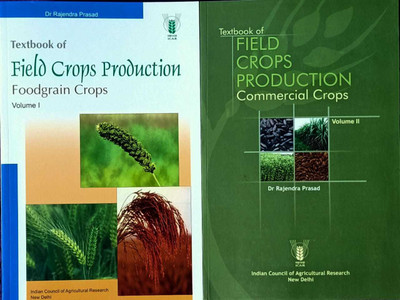Textbook Of Field Crops Production Volume 1 And 2(January 20201, Dr. Rajendra Prasad)
Quick Overview
Product Price Comparison
Preface to the First Edition After the Green Revolution set in the late 1960's the foodgrain production of our country has increased by leaps and bounds; from a mere 74.2 million tonnes in 1966-67 to about 208 million tonnes in 1999-2000. Much of this success has been made through the increase in wheat production from 11.4 million tonnes in 1966-67 to 74 million tonnes in 1999-2000 and to some extent in rice in the non-traditional rice belt in the north-western India, where rice-wheat rotation covers about 10 million ha and is the major provider to the Government food procurement for public distribution system. This increase in rice and wheat production has been possible owing to the availability of high-yielding varieties nd a match development of the suitable agronomic package of practices. Availability of rice hybrids which have higher potential calls for further fine tuning of the agronomic package. New packages of agronomic practices have also been developed for hybrids of maize, sorghum, millet and cotton; and these hybrids require intensive and careful application of inputs for higher efficiency and profit. Availability of high-yielding varieties/hybrids and increased irrigated facilities have resulted in the development of higher productive intensive cropping systems in several parts of the country and this calls for further agronomic research based on cropping system approach. Similarly for increased production in dryland areas, where most of India's oilseeds and pulses are grown, new and better varieties and matching agronomic practices involving moisture conservation and efficient use of available soil moisture and fertilizers and other inputs have been developed in the last two decades. Considerable research has also been done in the chemical control of weeds, and integrated management packages have been developed for most field crops. Although considerable advances have been made in the dairying and animal food (meat, fish, pork, poultry) production, India's food security is and will continue to remain based on successful field crop production. The need for a comprehensive textbook on field crops specially for post-graduate instruction had long been felt and I hope this book will meet this need. The text is adequately illustrated with tables, figures, and photographs to bring out the findings. weed Tâm grateful to the authors of different chapters for their kind co-operation. * an aiso grateful to Dr S. L. Mehta, former Deputy Director-General (Edn)


